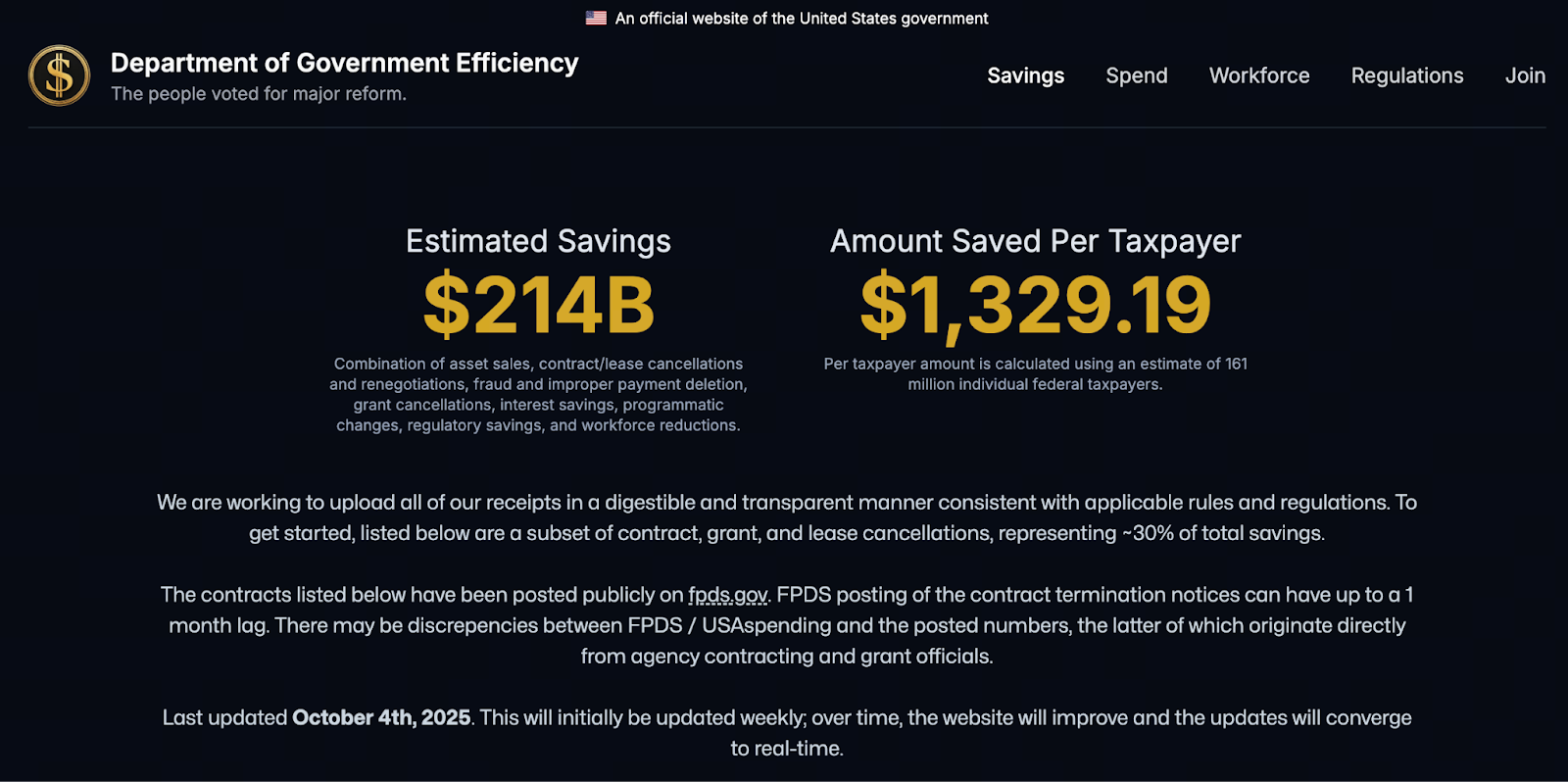The Quiet Fade-Out of DOGE: A High-Profile Reform Agency Dissolved Mid-Term
A Bold Start, a Quiet Exit

(Source: Department of Government Efficiency)
Earlier this year, the United States welcomed a new administration that prioritized streamlining government agencies and boosting administrative efficiency. The new administration established the Department of Government Efficiency (DOGE) as part of its core strategy. This department was widely seen as a cornerstone of administrative reform during Trump’s second term, with expectations for its long-term operation, potentially through 2026. However, recent reports reveal that this much-anticipated reform initiative quietly exited well before the midpoint of the term.
Office of Personnel Management Confirms DOGE Has Ceased Operations
When questioned by the media about DOGE’s status, Scott Kupor, Director of the U.S. Office of Personnel Management (OPM), gave a direct response: The Department of Government Efficiency is no longer active and is not recognized as an independent, centralized administrative entity. Its duties and authorities have been fully transferred to other government agencies, completing DOGE’s streamlining and reorganization. Leaked documents further show that the Office of Personnel Management has taken over DOGE’s core functions and is now the primary agency responsible for these responsibilities.
DOGE’s Personnel Reshuffle
In its early stage, DOGE drew considerable attention by assembling prominent leaders from the tech industry, including Elon Musk and several members of his core team. As DOGE’s influence faded, many of these key figures transitioned to a newly established government entity—the National Design Studio.
This organization, led by Airbnb co-founder Joe Gebbia and founded through an executive order in August, now leads efforts to revamp and modernize U.S. government websites and digital services. The contrast in reform direction is clear: the focus has shifted from aggressive cost-cutting and consolidation to enhancing user experience and rebranding government services.
Transparency Shortfalls Become DOGE’s Greatest Controversy
During its launch, DOGE repeatedly claimed to have cut hundreds of billions in expenses, but those figures were never publicly verified. The lack of transparency prevented outside financial analysts from assessing the actual impact of these reforms. Without oversight or financial reporting, doubts grew about DOGE’s effectiveness and undermined its credibility as a reform leader. Ultimately, the department’s failure to institutionalize public disclosure led to its rapid decline and demonstrated the difficulties of matching ambitious goals with established government structures.
If you want to explore more Web3 content, click here to register: https://www.gate.com/
Conclusion
The creation of the Department of Government Efficiency symbolized the new administration’s drive for systemic innovation. Its swift dissolution exposed the complex realities of government reform. While DOGE itself quietly faded, some of its responsibilities continue through other agencies in new forms. The reform approach has moved from drastic streamlining to visible optimization and redesign. The short existence of DOGE serves as a notable example in the administration’s reform process. It began with high expectations and ended quietly, prompting renewed reflection on the pace and direction of U.S. government transformation.
Related Articles

Pi Coin Transaction Guide: How to Transfer to Gate.io

Flare Crypto Explained: What Is Flare Network and Why It Matters in 2025

How to Use a Crypto Whale Tracker: Top Tool Recommendation for 2025 to Follow Whale Moves

2025 BTC Price Prediction: BTC Trend Forecast Based on Technical and Macroeconomic Data

What is N2: An AI-Driven Layer 2 Solution
